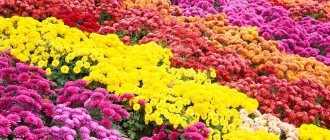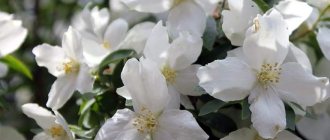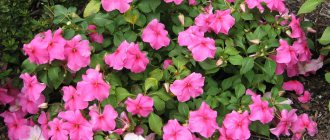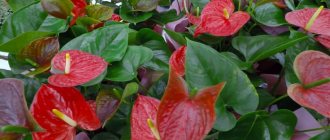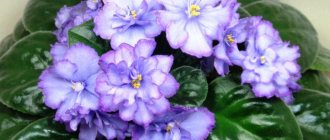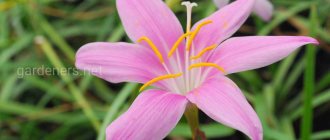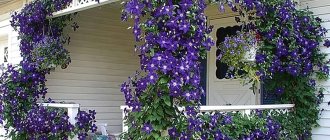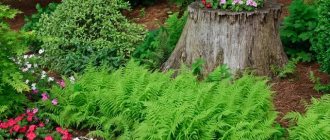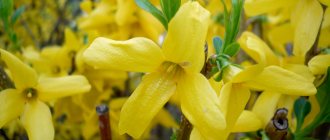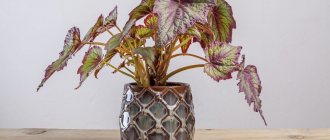Ginkgo biloba is one of the oldest plants on earth, a living fossil that was seen by Mesozoic dinosaurs. Its natural habitat is mainly China, with the exception of the most arid regions with a harsh continental climate. Currently, the tree is grown in various parts of the world with mild weather conditions. Among other things, ginkgo is suitable for growing at home, although growing it at home in the middle zone is not entirely easy, since it requires proper shaping. But for lovers of exotics and natural rarities, such plants invariably arouse increased interest, and many of them try to grow a “dinosaur tree” not only indoors, but also in their garden plots.
Places of growth
Currently, natural thickets of ginkgo can be found infrequently and in small areas. First of all, it is a tiny habitat in eastern China. It is here that you can meet individual representatives of the species, whose age exceeds a thousand years. Researchers claim that there are also 2-thousand-year-old specimens. They grow in mixed deciduous and coniferous forests, where they rarely form homogeneous thickets. From China, the seeds of the tree were brought to Japan, where it took root well, and from there it came to Europe and further around the world. In many countries it is grown as an ornamental plant, but most of all it is famous, of course, for its medicinal properties.
What to look for before buying and where to buy?
Now there is a large selection of various supplements and preparations with ginkgo biloba in pharmacies, online stores and from individual sellers. The popularity of the product and its rarity in our country breeds those who want to make money without being responsible for their product. When buying tablets with leaf extract at the pharmacy, look at the quantitative composition of the main components. Sometimes the plant you are interested in comes first in the name, but in the composition in minimal quantities.
The Jet-Life company has been producing and selling various dietary supplements, medicinal herbal infusions and all kinds of products from nature’s pantry for many years. Delivery to all corners of Russia, call the toll-free number 8-800-2500-968 and the operator will be happy to answer all questions, you can also leave a request for a call at the very top of this page, we will call you back at a time convenient for you.
Biological features
Very often the plant is classified as a conifer, with the stipulation that the ancient needles were reduced over time into leaves. This is a misconception, especially since ginkgo is a deciduous tree. It has only one unifying quality with conifers - belonging to a gymnosperm (a fact that today also causes controversy). Its leaves are real, not reduced. The plant is the only representative of its Ginkgo species, and has only one genus - biloba. The name is due to the structure of the leaf plate, which is partially divided into two parts, visually similar to blades.
Popular varieties of relict tree Ginkgo biloba
In landscape design, the following Ginkgo Biloba varieties are in demand:
Ginkgo biloba horizontalis
The height depends on the level at which the top was pinned.
Ginkgo biloba horizontalis forms an umbrella-shaped crown
This is a powerful tree, the branches of which are located horizontally; with age, the branches droop.
Ginkgo biloba Mariken
The low tree belongs to the dwarf varieties. The crown is easily formed into a round or flat ball.
Dwarf tree of Ginko biloba - Mariken.
In an adult crop, the trunk reaches 1 m in diameter.
Ginkgo biloba Pendula
Thanks to the weeping branches, an elongated dome-like shape is formed. This variety initially produces horizontally spreading branches, which later fall heavily.
The Pendula variety has a “weeping” tree shape
The height depends on the grafting site, usually from 2 to 2.5 m. It grows slowly, so it is suitable for use in small gardens. The fan-shaped leaves are collected in bunches of 3–5 together and have a notched top. Pendula is often confused with the cultivar Horizontalis, which has more horizontal branches, especially later in life.
This article uses materials from plantopedia.com
Flowering and fruiting
The plant has female and male individuals, which can certainly only be distinguished during flowering. Some of the differences can be seen in the shape of the crown, but only tentatively. Females have a more rounded and wider crown, males seem more slender and pyramidal. The tree begins to produce its first fruits only after reaching the age of 20-30 years. The female flowers are greenish-yellow in color and are collected in small inflorescences.
Male specimens produce spore pollen that fertilizes female flowers. No other tree species reproduces in this way, using mobile male cells.
The fruits of biloba vaguely resemble an apricot, covered with a silvery coating, for which the plant received its second name “silver apricot (or nut).” The seed resembles a seed or a nut; on top it is covered with pulp with a burning and astringent taste. In China, they are collected for medicinal purposes, using only the seeds. In parks where ginkgo grows, you can see entire Chinese families going out to collect its fruits. They usually leave the slippery flesh and shell there, right on the ground, because they have a sickening smell.
Botanical description
Tree up to 50 meters high and trunk diameter more than 3 meters; the crown of young trees is pyramidal, and that of mature trees is spreading; the bark is gray, rough, in old trees with longitudinal cracks; the leaves are large, have a fan-shaped or wedge-shaped wide plate, strongly indented, with a wedge-shaped base.
The plant lives for more than 1000 years.
Dioecy, on male trees catkins are formed, and on female trees paired seeds are similar to apricot kernels; the flowering process begins at the 25th year of life. After pollination, nut-like cones appear; they smell like old oil due to the butyric acid content.
Ginkgo biloba tree
Is it possible to grow ginkgo in the middle zone?
There is no clear answer to this question. In some cases, the experiment turns out to be successful even in gardens near Moscow; in others, the plant either dies or, after much suffering, moves to home conditions. However, adult specimens that have reached (at least one of them) 5 meters in height grow without shelter in the Moscow Botanical Garden.
Young specimens can survive winters under favorable weather conditions. But in frosty winters they most often freeze at the level of the snow cover. At first, the plant can be protected with covering material, but as it grows, this becomes more and more difficult. Therefore, ginkgo most often grown in Russia has a creeping, squat appearance, retaining only that part that ends up under the snow in winter. After weighing all the risks of losing a carefully cultivated tree, many decide to grow ginkgo at home. But the work of professional nurseries and amateur enthusiasts to zone this relict culture does not stop.
Preparing seeds for planting and their germination
If you notice female ginkgo in a park or botanical garden, wait for the drupes and collect the fruits. At home, they must be carefully cleaned of pulp. Seeds do not require stratification (cold hardening). In fact, you can immediately throw them into the soil and wait for sprouts.
But it’s better to take control of this process so that the result is 100% successful. So…
- Soak the seeds in soft, filtered, chlorine-free water for 5-7 days.
- Change the water daily.
- At the end, change the water to a light (pinkish) solution of potassium permanganate or another fungicide. This will prevent the possible development of a fungal infection, which can kill the seedlings.
- Take a plastic container with a lid. Place a layer of cotton wool, a soft cotton cloth, a few napkins, or even folded toilet paper on the bottom. That is, a material that retains moisture is suitable, although sphagnum moss remains the best option.
- Generously dampen this pad using a spray bottle. And spread the seeds on it.
- Cover the top with a second layer of the same, also moistened material.
- Close the container and keep for 20-30 days at room temperature. The container, of course, must be periodically opened, ventilated and moistened the seeds if they are dry.
Planting seedlings in separate containers
In three weeks or a little more the sprouts will “hatch”. All “awakened” seeds must be immediately removed and planted in separate containers. The volume of such dishes should be at least half a liter, and the planting depth should be 2 cm. The seedlings that have become seedlings will spend their first season in this container. And although ginkgo is not afraid of cold and heat, it is better to play it safe and create comfortable conditions for the seedlings - in the range from 0 to +10. Let's say, put them in a cool basement with good ventilation.
Transplanting seedlings into open ground
The soil in the containers and the seedlings themselves are watered abundantly to make removing the plant easier and safer for its root system. A hole is made in the selected location, which should be at least 2 times the width and depth of the volume of the container.
Ginkgo, let us remind you, is a plant without whims, but if you want the seedling to develop faster, then fill the hole not only with the soil taken from it, but with a loose and nutritious soil mixture. This will enable the seedling to gain the potential for intensive growth.
A little soil is poured into the planting site, baking powder (peat or river sand) and compost or humus are added. Approximately the same amount of all components is taken. The seedling is placed in a hole so that its root collar (the base of the first root) is located exactly at ground level. Now the seedling is watered so that the water fills all the voids near the root. And they cover its base with mulch - peat, compost, straw or hay.
Ginkgo growing options
In natural conditions, ginkgo is a tall tree that can grow up to 30 m or more. Of course, it will not be possible to grow such a large plant at home. When grown outdoors, it will most likely take a bush form, especially if you support the development of basal shoots, which usually tend to actively grow. Alternatively, you can grow a ginkgo bonsai in the garden or at home, but outside it will have to be very well insulated, and in addition, protected from rodents. Planting in containers that are brought indoors for the winter is also practiced. But room temperature is unsuitable for winter maintenance of the crop.
Of course, it is unlikely that you will be able to wait until the planted specimen bears fruit. Firstly, you need to wait for this for decades, and secondly, this requires a different-sex couple. But you definitely shouldn’t worry about this because of the unpleasant smell of the fruit. In many American parks where ginkgos are grown for decorative purposes, they are immediately grafted with a male bud.
Gingo biloba in aesthetic medicine
Antioxidant properties, influence on peripheral blood circulation and protective effect of ginkgo extracts in age-related degenerative processes open up prospects for its use in cosmetology.
In cosmetology, ginkgo is used in anti-aging skin, hair loss, and weight loss products. Japanese researchers Watanabe and Takahashi have patented a hair tonic containing vitamins and ginkgo extract. A weight loss product has been developed, which contains alpha-blockers and ginkgo extract. This product improves skin condition and reduces oil accumulation.
It has been established that the application of an aqueous-alcoholic extract of ginkgo leaves induces local enzymatic activity of superoxide dismutase and catalase in the epidermis, and also causes a systemic increase in the activity of these antioxidant enzymes in the tissues of the liver, heart and kidneys in experimental rats. Pre-application of this extract protects the skin from UVB damage 10].
Planting ginkgo biloba
For those who still decide to grow this tree in the garden, you should know that it needs to be allocated a significant area. The place should be sunny, bright, moderately dry and constant - replanting is unlikely to be carried out without damage to the established specimen. If a ready-made seedling from a nursery is planted, it is necessary to prepare a planting hole with high-quality, fertile soil. It is advisable that in this place groundwater does not come close to the surface. When planting a seedling, you need to strictly control the position of the roots - they should not bend or intertwine. They need to be spread out in different directions and provided with space along the entire length. In the first years of its life, the tree will need to be watered regularly throughout the warm season, without drying out the roots, because... this could be disastrous.
The first three years after planting a seedling, it practically does not grow, this is a normal phenomenon. The plant needs a long time to settle in a new place and strengthen the root system for further growth.
Formation of the frame and crown of ginkgo
These tasks are given attention in the first 3-4 years of tree growth. First, you need to cut off all the branches growing near the ground. Secondly, branches that compete and interfere with each other are also deleted.
They also form the skeleton of the tree by shortening the shoots by 10 cm. They do this so that the bud faces outward and not inward of the crown, because it is from it that the new branch will grow. It is better not to plant ground cover plants under the future crown. And mulching an area with decorative pine bark is both beautiful and beneficial for the tree.
Ginkgo grows slowly, in the first seasons the increase is 15-20 cm. But after 6-7 years, growth accelerates, and the trunk noticeably coarsens and thickens. Ginkgo does not require chemical treatment because it is resistant to pests and practically does not get sick.
Already in the second year of the tree’s life, you can collect its leaves to prepare homemade healing remedies from them. In particular, make alcoholic infusions, decoctions or add to teas.
Well, those who do not have a plot of land at all can grow indoor and compact ginkgo bonsai.
(Visited 821 times, 2 visits today)
How to grow ginkgo at home?
Of course, you cannot grow a large tree at home, but with regular pruning you can have a very nice home specimen. You can achieve greater effectiveness by forming a bonsai from a “silver nut”. Among experts, this bonsai specimen is considered one of the most outstanding.
The basic requirements of agricultural technology are to choose a bright place without direct sunlight, high humidity, fairly frequent watering and mandatory compliance with the conditions of the dormant period when the leaves fall. A cool winter is a necessary condition for the successful growth of the crop. If the optimal summer temperature is within +22...+24C, then the winter temperature range is only 4...+8C (but not more than +12C). The plant should remain in a state of complete dormancy for at least 2 months.
Pruning must be done before the start of a new growing season, in the spring.
If you decide to leave the ginkgo to winter in the apartment.
Determine the “place of residence” of the plant - it is advisable not to move it, however, periodically rotate it so that the tree grows symmetrically. If (which happens most often) there are heating devices near the tree, periodically spray its crown with water. Normally, ginkgo plants shed their leaves during the winter. When you see that the leaves of the tree have acquired a yellow-golden hue, try to provide it with a period of rest: reduce watering and, if possible, place it on the balcony, covering the pot with the tree with a cardboard box. It happens that ginkgo leaves do not turn yellow, but immediately wither. Don’t worry, this is also possible, but in order not to confuse this option of dormancy with a disease or violation of the watering regime, you must definitely monitor the health of the apical bud - it must remain convex, healthy, without rot or fragility. It happens that in a heated apartment, ginkgo plants do not shed leaves at all. This is also normal, but such trees may be weaker than those that were resting. The timing of the transition to dormancy in ginkgo can vary from November to February. The time frame for exiting this state is from April to June. The plant itself will decide when to fall asleep and wake up.
As a rule, over the winter the trunk of the seedling finally becomes lignified and turns brown. If the ginkgo wintered on the balcony, then in mid-March you need to bring the container into the apartment and increase watering. You can understand that the tree has woken up by the state of the apical bud. It will begin to swell, become larger and gradually turn green. Buds will also appear in the leaf axils. New ginkgo leaves grow very quickly; in just a week, the plant will take on the appearance it left during the dormant period. If you decide to plant a one-year-old ginkgo after wintering, it is advisable to do this before the leaves bloom - usually May - June. However, make sure that the threat of return frost has passed. Recommendations for planting one-year-old ginkgos are similar to those for planting 5-6 month old ones.
Growing ginkgo from seeds
In appearance, the seeds are similar to an apricot kernel, but have a lighter color. After collection, they quickly lose their viability, especially when stored in a warm place. Within six months, their ability to germinate is reduced by about half, and then even faster. Therefore, the freshness of seed material is one of the important conditions for success.
Ginkgo is planted to a depth of approximately two times the size of the seed itself (about 5 cm). You can expect germination in a month, the maximum period is three months. If seedlings have not appeared by this time, the seeds most likely turned out to be nonviable. Creating greenhouse conditions using a film cover will speed up the process. At first, young seedlings have an extremely small growth rate; for example, until the seedlings are ready for transplanting to a permanent place, you need to wait at least a year.
The time for planting ginkgo seeds is early spring. Caring for young seedlings, first of all, involves regular moderate moisture, since drying out the roots is completely unacceptable and can lead to their rapid death.
What to do with sprouted seeds?
After a month and a half, the container with the seeds is removed from the refrigerator. The seeds must be rinsed again in potassium permanganate, after which they can be sown. If young shoots appear earlier, they are ready for planting. To germinate seedlings, we recommend taking 1-liter plastic containers with a drainage hole. It is also necessary to pour 2-4 cm of expanded clay or any other drainage at the bottom of the container. The soil should be light and rich in minerals.
Despite the size of the seeds, you should not bury them deeply - 2 cm is the maximum depth. Watering is standard: the earthen ball should be moist, but not waterlogged and not dry. The method in which the seed remains almost on the surface of the soil, submerged to a third of its thickness, has also shown good results. However, this method, although it gives quick germination of seeds, requires more care. It is necessary to spray the soil frequently and regularly, keeping it moist.
The germination time of seeds is from one week to a month. But there have been cases when ginkgos slept in the ground for up to six months, after which they sprouted quite safely.
If you planted a lot of ginkgo seeds in one container, then about 20 days after germination they can be planted so as not to subsequently injure the roots of young trees.
Propagation of ginkgo by cuttings
If mature specimens are available, it is easier and more accessible to obtain new plants using cuttings. If the tree does not bear fruit (and most likely this is the case), the gender can be determined with a certain degree of probability by the shape of the crown, but there is no big difference in the cultivation of male and female individuals of the crop. The cuttings are cut at the beginning of summer, the leaves are removed from their lower part to half or a little higher and they are rooted in moist and light soil with the arrangement of a mini-greenhouse. If the cuttings are partially lignified, you cannot do without Kornevin or another root formation stimulator. It is advisable to spray the remaining leaves and the cutting itself daily and under no circumstances allow the soil to dry out.
Decorative forms
Ginkgo Variegata - a tree with golden stripes on the leaves
By the nature of branching:
- Fastigiata - with a narrowly conical or columnar crown;
- Pendula - with weeping branches, sometimes with an umbrella-shaped crown.
According to the shape and color of the leaves:
- Aurea - with light golden leaves;
- Variegata - with golden stripes on the leaves;
- Laciniata - with larger leaves and 3-5 lobes.
Reproduction by root layering
This method is suitable for outdoor plant specimens, since domestic trees usually do not produce layering. The rooting system is traditional - the lower shoot is dug in and secured with a wooden or wire pin. If it has become quite lignified, you can make incisions with a sharp knife at the point of contact with the ground and treat this area with a root formation stimulator. It is necessary to monitor constant soil moisture at the rooting site. It will be possible to plant a young plant no earlier than in a year, and only if there are all signs of the formation of its own viable root system.
Medicinal properties of ginkgo
Today, the plant has virtually no analogues in terms of the degree of beneficial effects on cerebral and peripheral circulation. Systemic intake of ginkgo extract has excellent effects by dilating blood vessels, counteracting platelet coagulation, increasing the flow of oxygen and glucose to the brain and significantly improving mental abilities. The complete safety and effectiveness of the product has been confirmed by numerous studies of international clinics. Thanks to this, the extract obtained from the leaves of the plant is today the most well-studied and best-selling of all medicinal plants known in the world.
Possible side effects and contraindications
Ginkgo biloba has quite strong properties and the use of any medications with it must be agreed with a doctor. You should always consider the combination with other synthetic and herbal drugs.
Contraindications for taking ginkgo biloba:
- pregnancy and breastfeeding , the effect during pregnancy has not been studied, it is better not to risk it;
- individual intolerance , if you are allergic to mango bark or cashew nuts, you will have poor tolerance to preparations with ginkgo;
- people with low blood clotting (ginkgo leaves thin the blood);
- should not be taken together with drugs that reduce blood clotting , it will enhance their effect;
- Ginkgo biloba should not be taken with strong stimulants and sedatives , the effect of stimulants will be slightly enhanced, side effects may be similar to intoxication;
- should not be taken if you have high blood pressure (above 180);
- should not be taken if you have epilepsy ;
- should not be taken for diseases in the acute stage, ulcers , heart attacks .
Crude leaf extracts in high concentrations can cause side effects: nausea, vomiting, allergic reactions, etc.
Interesting facts about ginkgo
- The relict tree is the oldest of those that have survived to this day; it has been growing on our planet for 300 million years, being the only representative of its genus.
- People have been using the healing properties of biloba leaves and nuts for 5 thousand years. The most active substances are concentrated in the leaves.
- According to archaeological research, the tree once grew in the territory of modern Europe, but completely disappeared with the onset of the Ice Age.
- It is reliably known how and when the plant came to Europe. This happened in 1712 through the efforts of a German doctor and botanist named Engelbert Kaempfer, who brought the first seeds from Japan to his homeland.
- In males the trunk is taller and thinner, in females it has a thicker top.
- The maximum known height of the tree is 40 m.
- Ginkgo has incredible resistance to insect damage, rot, infectious diseases and air pollution. Biologists say the reason for this is its high ability to produce antioxidants and similar protective substances.
- After the atomic explosion in Hiroshima, plant life began to recover with ginkgo trees, which were the first to produce new buds after the nuclear war.
Chemical composition
The chemical composition of the leaves (or as they are also called “Ginkgo biloba herb”) and fruits is different.
The leaves are more widely used for medicinal purposes due to the large number of biologically active substances:
- essential oils;
- organic acids;
- tannin;
- polysaccharides;
- enzymes;
- minerals;
- vitamins.
The properties of ginkgo leaves are determined by two main components : terpenoids and flavone glycosides .
Flavone glycosides : these are compounds often found in plants (some vitamins, enzymes, antibiotics, plant hormones, etc.), glycosides that have P-vitamin activity. Vitamin P (rutin) is an antioxidant, protects against free radicals and cancer; has a good effect on blood vessels, strengthens their walls, reduces capillary fragility and blood clotting.
Terpenoids: ginkgolides and bilobalides. Protects brain neurons, dilates blood vessels and increases their elasticity.
The seeds contain proteins, acids (butyric, valeric), glucose, starch, vitamin A, phytosterols (prevent the absorption of bad cholesterol).
